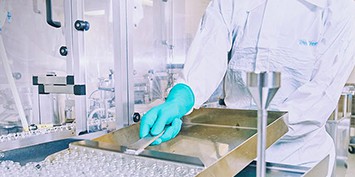Maintaining food safety is critical across all food processing facilities. The USDA (United States Department of Agriculture), through its Food Safety and Inspection Service (FSIS), enforces strict contamination control standards to ensure the integrity of food products. These regulations help prevent contamination risks at every stage—from production to packaging—safeguarding public health and fostering consumer trust.
Key Aspects of USDA Contamination Control Standards
- Sanitation Performance Standards (SPS)
- SPS are core guidelines that set expectations for sanitation conditions in meat, poultry, and egg processing facilities. They cover facility design, cleaning procedures, and pest control. Facilities are required to maintain environments free from biological, chemical, and physical hazards.
- Sanitation Standard Operating Procedures (SSOPs)
- Facilities must develop and implement SSOPs to prevent contamination before and during operations. These procedures are specific to each plant and outline the steps necessary to ensure proper cleaning of equipment, surfaces, and tools.
- Environmental Monitoring and Testing
- Facilities must conduct routine environmental monitoring to identify and address contamination risks. Common practices include microbial testing (for pathogens like Listeria monocytogenes), chemical residue detection, and allergen control.
- Pest Control Programs
- FSIS requires manufacturers to have effective pest control systems in place to eliminate potential sources of contamination, such as rodents and insects, which can compromise sanitation.
- Personnel Hygiene and Training
- Employees must adhere to hygiene protocols, including the use of personal protective equipment (PPE) and regular handwashing. Training programs ensure staff understand their role in preventing contamination.
- Facility Design and Equipment Maintenance
- Proper facility layout helps prevent cross-contamination between raw and finished products. Equipment maintenance schedules ensure all tools remain sanitary and operational.
Recommended Products for Contamination Control
- Tacky Floor Mats: Prevent contaminants from entering controlled areas by capturing debris from footwear at entry points.
- PPE (Personal Protective Equipment): Items such as proper changing of disposable gloves, aprons, hair nets can contribute to maintaining a clean production environment.
- Absorbent Low-Linting Industrial Wipes: Ideal for quick cleaning of work surfaces and equipment, ensuring cleanliness without introducing lint or residues.
- Antimicrobial Hand Sanitizers: Ensure workers maintain hygiene standards throughout shifts.
- Pest Control Solutions: Use non-toxic traps and repellents to prevent pest infestations without risking product contamination.
Compliance and Inspections
USDA inspectors routinely audit facilities to verify compliance with the standards. Non-compliance can result in penalties, recalls, or facility shutdowns. Maintaining detailed records of cleaning processes, inspections, and corrective actions is essential for facilities to pass these audits and avoid disruptions.
Why Compliance Matters
Adhering to USDA contamination control standards ensures:
- Consumer Safety: Prevents the spread of foodborne illnesses.
- Regulatory Compliance: Avoids fines and legal actions.
- Operational Efficiency: Minimizes the risk of costly recalls and downtime.
- Brand Trust: Builds consumer confidence by delivering safe, high-quality products.
Conclusion
Compliance with USDA contamination control standards is not just a regulatory requirement but a strategic practice that ensures food safety and operational success. By following Sanitation Performance Standards (SPS) and implementing robust SSOPs, facilities can effectively reduce contamination risks, protect consumers, and strengthen their brand reputation. Staying up-to-date with FSIS guidelines helps businesses maintain compliance and proactively manage potential hazards.
For detailed guidelines, visit the official FSIS Sanitation Performance Standards Compliance Guide here.














